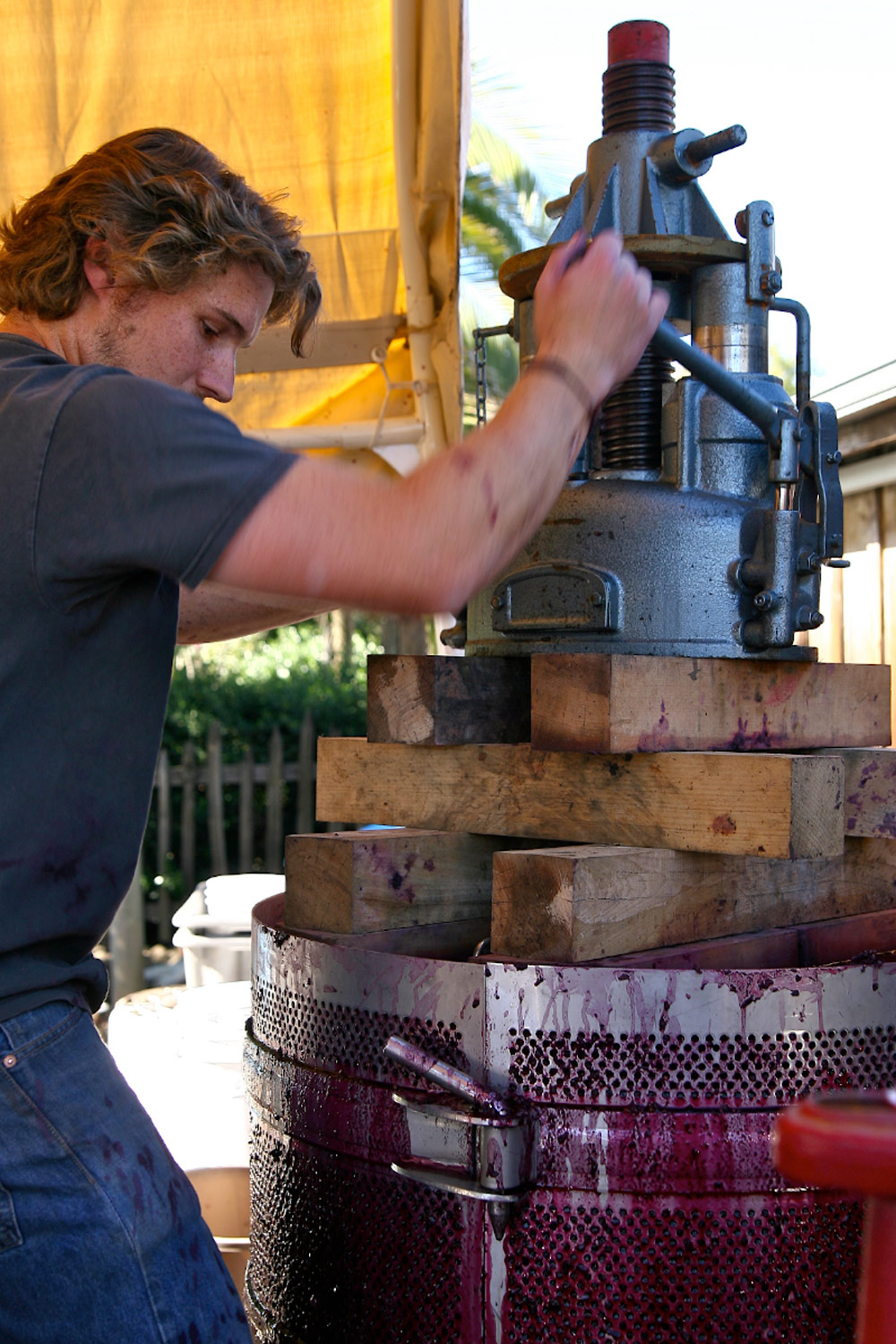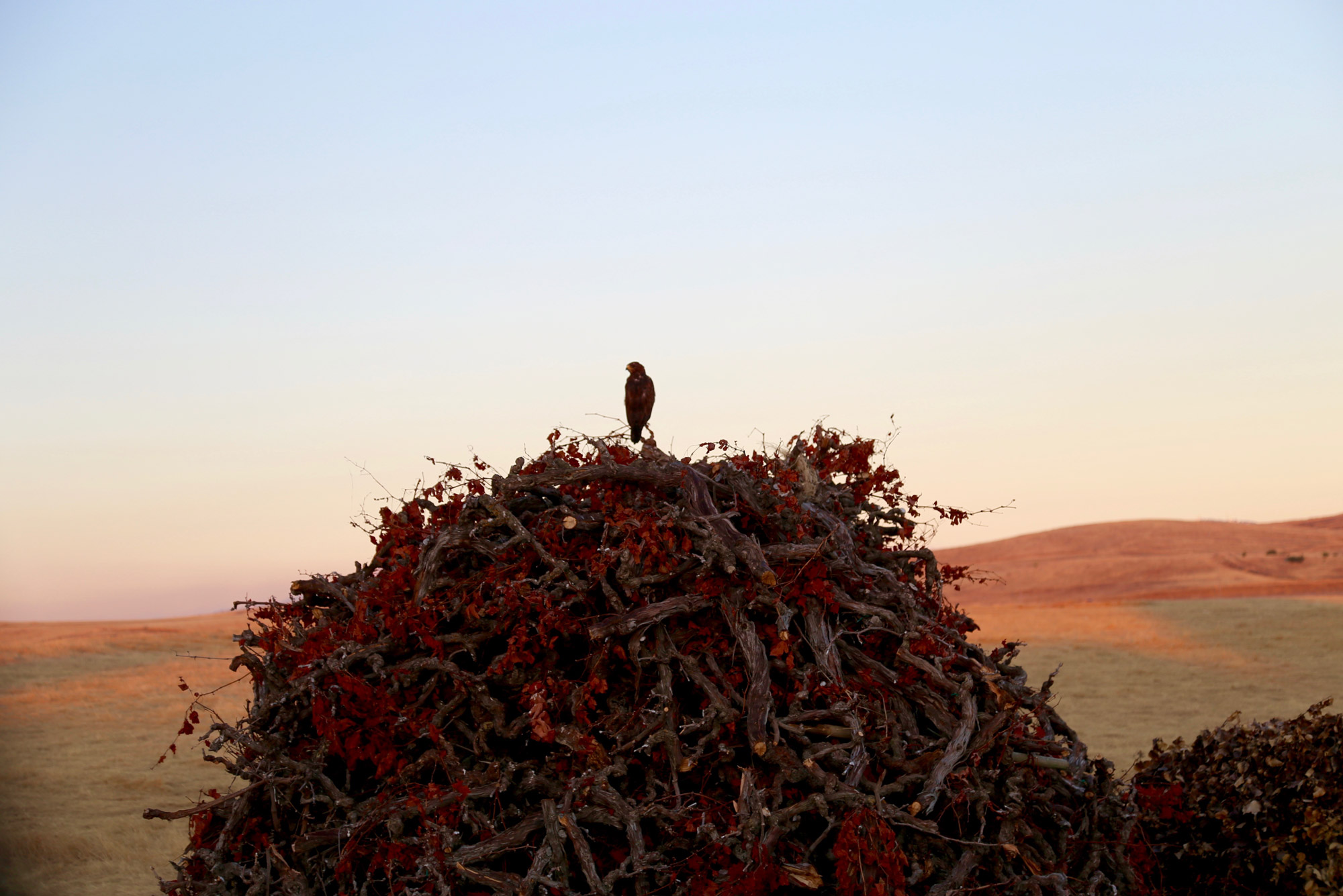
“Ad Astra Per Alia Porci
To the Stars on the Wings of a Pig”

Bedrock Wine Co. was started in 2007 by Morgan Twain-Peterson. Working out of a small converted chicken coop in a friend’s backyard, Morgan focused on making personality-filled wines wrought from a small array of thoughtfully farmed vineyards. Over time the chicken coop and its outdoor fermenters and tiny basket press gave way to production at another friend’s winery and eventually to the “elegant” tin-sided warehouse that is now called home. In addition, after six years of working alone the winery welcomed Chris Cottrell as a partner-in-crime along with a small, dedicated staff of highly decent human beings.

The winery is first and foremost a mission-driven operation dedicated to preserving and rehabilitating old vineyards around California. These vineyards, planted by California’s viticultural pioneers in the late 19th and early 20th centuries, are living pieces of history. Not only are we able to draw inspiration from those very pioneers, but we get to actually use the materials they planted, which have survived two world wars, Prohibition and a constantly changing marketplace. If something has been growing for over 100 years it not only deserves the respect of us humans, but it probably makes some darn good wine too.
Though oftentimes Zinfandel, these vineyards are also planted to Mataro (Mourvedre), Carignan, Petite Sirah, Alicante Bouschet, Grenache, Semillon, Gewurztraminer, Trousseau Gris and Riesling along with dozens of others. The beautiful diversity of our vineyards is certainly a challenge, but it is equally exciting. Charles de Gaulle said, ‘how can you govern a country with 264 types of cheese?' but he did, and with great aplomb. We choose to embrace the challenge of capturing greatness from the viticultural puzzle that is an old vine field blend vineyard.
The winery is also dedicated to taking advantage of the diverse terroirs of California and their capacity to make an enormous range of styles, be it delicate and perfumed rosé, barrel-fermented whites, or violet and pepper-tinged Syrah. We are always exploring—from the heart of Oakville in Napa to the northern reaches of Mendocino and gold hills of Amador, the vastness of Lodi and the beaches of Contra Costa to every corner of Sonoma. Each year, if we are lucky, we find something quirky and new. Throughout all the wines, though, is a dedication to making wines that maintain poise while being infused with California sun. And, most importantly, that are delicious.




